How To Sync Files with WebPal using GoodSync
Learn how to use the popular GoodSync software to backup and synchronize your desktop files automatically with WebPal.
Once set up with a brand-new WebPal Cloud Server, one needs to upload a large amount of data to the server in order to have a full list of documents ready to access in the cloud.
Often, slow and spotty internet connections, bandwidth restrictions and just patience stand in the way of that. What is the most reliable way to transfer such large amounts? This article explains how.
We have tested a WebDAV-compatible Sync Client (available for both Mac and Windows) called GoodSync for this purpose. As an example, we are tasked to transfer 14GB of Office Documents onto our new WebPal Server.
To get started, download and install the GoodSync client from http://www.goodsync.com/download.
Once started, select Job->New to create a single, one-time-use Upload Job. We recommend naming it "Upload to WebPal" or similar.
Select "Backup" as the Job type.
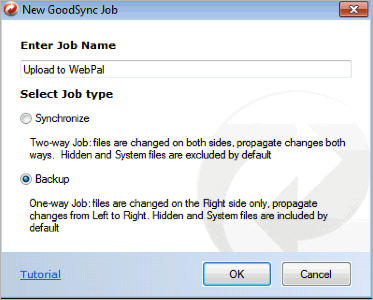
This will create a new Job in the Job List of the main window.
Depending on how long you expect the sync to take, you may want to limit its bandwidth usage so that regular work in the office can continue without network contention. In order to do this, Right-Click on the new job and select Options...
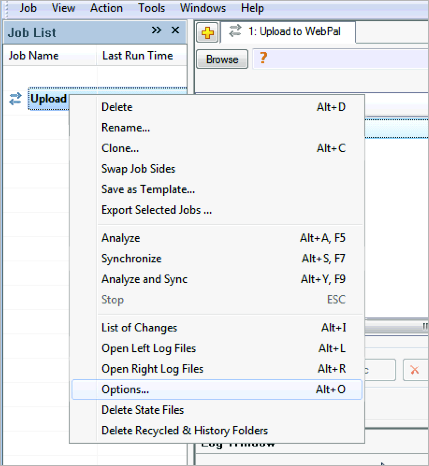
Change the upload speed to a desired value, we recommend 100KB/s max to ensure uninterrupted daytime work. Hit Save.
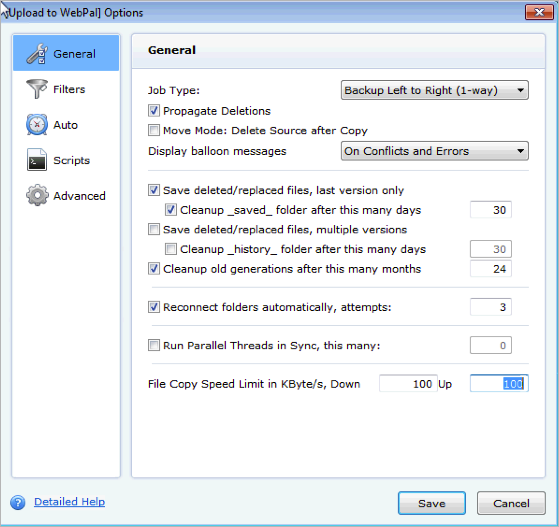
Back in the main window, select the source folder (left Browse button) on your PC/Server:
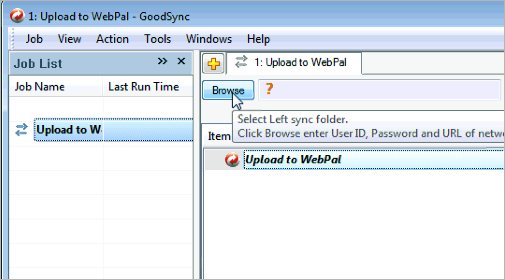
Now select the destination - hit right-side Browse button, select WebDAV in the dialog and specify
http://dav.YOURSERVER.webpal.net
Your login
Your password
Select Go.
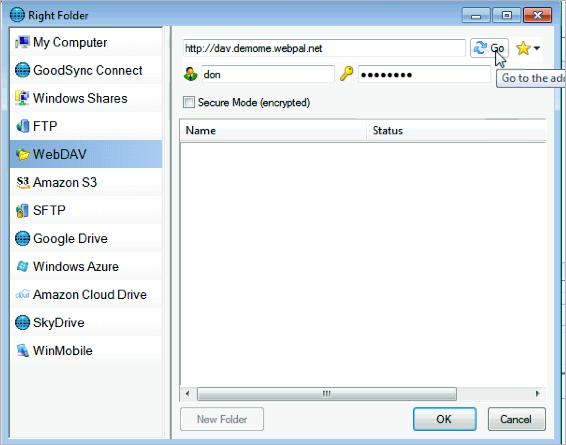
If your login information was correct, an entry should appear with a root folder available. Select one of your folders with write permissions and create a new folder "Upload" within it. Hit OK.
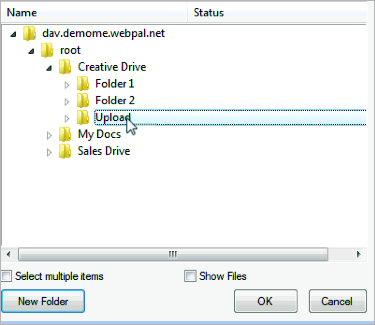
You can now hit Analyze to see which files will be synced.
![]()
The sync will start. You can minimize the window by selecting View->Mini Mode.
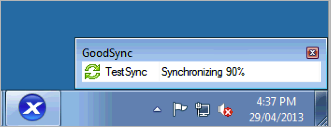
If somehow the sync is interrupted, it can be resumed at a later point. The Analyze function ensures that already synced files will not be re-synced.
Once all files are transferred, we recommend to delete the One-time sync job, lest accidental re-execution overwrites changes to the cloud-side documents. Of course, you may want to consider making the local drive read-only after the sync as well, in order to prevent accidental version conflicts.
How To Sync Files with WebPal using GoodSync from Palomino Inc. on Vimeo.




